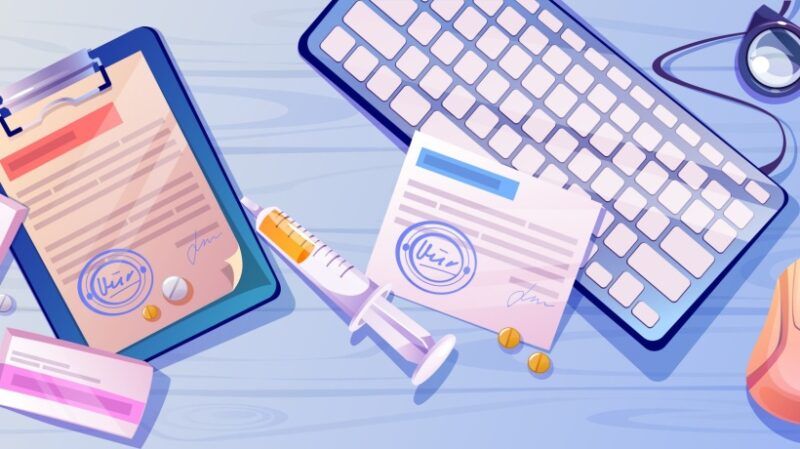
Revolutionizing Healthcare With An eLearning Platform
Did you know that the healthcare and life sciences industry is experiencing a massive shift in how professionals are educated? Welcome to the eLearning revolution! It’s no longer just about textbooks, classrooms, or in-person lectures. Today, advanced technology is transforming how medical professionals acquire knowledge, stay updated, and deliver better care. But what’s behind this shift? Let’s dive into how eLearning platforms are making healthcare education more accessible, flexible, and effective than ever before.
Overview Of The eLearning Revolution
The eLearning revolution is more than a trend—it’s a paradigm shift. With healthcare and life sciences constantly evolving, traditional learning methods can’t keep up with the rapid pace of advancements. From surgical techniques to new pharmaceutical discoveries, professionals need instant access to up-to-date information. That’s where eLearning steps in—bringing education to your fingertips, anytime, anywhere.
Drawing from our experience, we’ve seen how platforms can provide cutting-edge courses tailored for healthcare professionals. These tools are not just digital libraries—they’re comprehensive ecosystems designed to engage learners, track progress, and ensure retention.
The Role Of Technology In Modern Healthcare Education
Technology is the engine driving eLearning in healthcare. Artificial Intelligence (AI) personalizes learning paths, while Virtual Reality (VR) and Augmented Reality (AR) simulate real-world medical procedures. Imagine practicing a complex surgery in a VR environment before performing it on a patient—amazing, right?
When we trialed platforms, we discovered how immersive tools can prepare professionals without risking patient safety. Additionally, cloud-based Learning Management Systems (LMSs) enable global access to courses, ensuring even those in remote areas can upskill.
Benefits Of eLearning For Healthcare Professionals
Why are more professionals turning to eLearning? Here are some compelling benefits:
Flexible Learning Opportunities
Healthcare workers often juggle demanding schedules. eLearning offers self-paced modules, letting learners fit education into their busy lives. Online platforms enable professionals to access bite-sized lessons on the go.
Continuous Professional Development (CPD)
Staying certified is critical in healthcare. eLearning ensures professionals can meet their CPD requirements with ease.
Accessibility For Remote Locations
In many rural areas, access to quality education is limited. eLearning bridges this gap. Our findings show that tools can connect rural practitioners with experts worldwide, ensuring they receive the same quality training as their urban counterparts.
Cost-Effectiveness Compared To Traditional Education
Think about it—no travel expenses, no physical classrooms, and fewer materials. eLearning significantly reduces costs. Some platforms even offer free resources to help professionals advance their careers.
Key Features Of Effective eLearning Platforms
Not all eLearning platforms are created equal. Here’s what makes a platform stand out:
User-Friendly Interfaces
Learners shouldn’t need a tech degree to navigate a platform. Online platforms should prioritize simplicity, ensuring seamless learning experiences.
Customizable Learning Paths
Every learner is different. Some platforms allow users to create personalized curriculums tailored to their roles, making the learning process more relevant and engaging.
Integration With Existing Healthcare Systems
Effective eLearning platforms integrate with existing Electronic Health Records (EHR), ensuring professionals can link training to real-world applications.
Mobile Learning Capabilities
With mobile-first platforms, healthcare workers can learn anywhere—whether they’re commuting or taking a quick break between shifts.
Methods Of eLearning In Healthcare
eLearning isn’t one-size-fits-all. Here’s a closer look at popular approaches:
Learning Management Systems
- Definition and functionality
An LMS is a software application that delivers, tracks, and manages educational content. Our research indicates that some LMS platforms are staples in healthcare education, offering scalable and customizable solutions.
Webinars And Virtual Workshops
Webinars bring live, interactive training to professionals worldwide. After trying out some platforms, we’ve found they’re perfect for hosting virtual workshops that mimic in-person sessions.
- Advantages for professional training
Webinars allow experts to share knowledge in real time while learners engage through Q&A sessions. Tools also provide detailed analytics to measure success.
Use Cases For eLearning In Healthcare And Life Sciences
How is eLearning making a real-world impact? Let’s look at some examples:
Online Training For Medical Procedures
Some platforms offer simulated training environments for complex procedures, reducing the risk of errors in real surgeries.
Continuing Education For Healthcare Workers
eLearning helps professionals stay compliant with certifications.
Patient Education Programs
Patients, too, benefit from eLearning! Apps can empower patients to understand their conditions and treatment options better.
Challenges And Solutions In Implementing eLearning
eLearning isn’t without its challenges. Here’s how to tackle them:
Addressing Technological Barriers
Not everyone has access to high-speed internet. Cloud-based platforms solve this by enabling offline learning options.
Ensuring Engagement And Retention
Keeping learners engaged is tricky. Tools can gamify learning to make it interactive and fun.
Overcoming Resistance To Change
Some professionals may prefer traditional methods. Offering hybrid solutions that combine eLearning with in-person sessions often eases the transition.
Comparative Analysis: eLearning Vs. Traditional Learning In Healthcare
Here’s a breakdown of how eLearning compares to traditional learning in the healthcare and life sciences industry:
Flexibility
- eLearning
Offers high flexibility, allowing learners to access courses anytime and anywhere. - Traditional learning
Limited flexibility, tied to fixed schedules and physical locations.
Accessibility
- eLearning
Provides global access to educational content, even in remote areas. - Traditional learning
Accessibility is restricted to specific classrooms or institutions.
Cost
- eLearning
Generally more cost-effective due to the elimination of travel, materials, and physical infrastructure expenses. - Traditional learning
Often incurs higher costs, including transportation and on-site resources.
Learning Pace
- eLearning
Allows learners to progress at their own pace, catering to individual needs. - Traditional learning
Instructor-led with a fixed pace, often limiting personalized learning.
Content Review
- eLearning
Enables unlimited access to content for review, ensuring better retention and flexibility for revisiting materials. - Traditional learning
Content review is typically limited to classroom time and requires additional resources for revisiting.
This comparison highlights how eLearning provides modern solutions to challenges posed by traditional education, making it the preferred choice for many healthcare professionals.
Future Trends In Healthcare eLearning
What’s next for eLearning in healthcare? Let’s explore:
The Impact Of Artificial Intelligence On Learning Platforms
AI-powered platforms ensure each user’s experience is tailored to their unique needs.
Personalization And Adaptive Learning Technologies
Imagine a platform that adjusts its difficulty based on your progress. That’s the promise of adaptive learning tools.
Predictions For The Next Decade In Healthcare Education
As Virtual and Augmented Reality tech evolves, lifelike simulations will become the norm, revolutionizing how medical students and professionals learn.
Conclusion: The Future Of Healthcare Education Through eLearning
To sum up, eLearning is transforming healthcare education, making it more accessible, flexible, and affordable. From cutting-edge technologies to real-life applications, it’s clear that eLearning is here to stay. As stakeholders in the healthcare industry, it’s time to embrace this revolution and shape the future of education.
FAQs
eLearning in healthcare uses digital platforms to train professionals, offering flexibility and accessibility.
It ensures professionals stay updated on rapidly evolving technologies and practices.
eLearning bridges the gap by providing high-quality training even in remote areas.
While it’s a great supplement, hands-on clinical training remains crucial.
Common issues include technological barriers, engagement challenges, and resistance to change.
Expect AI-driven personalization, VR simulations, and greater global accessibility.

